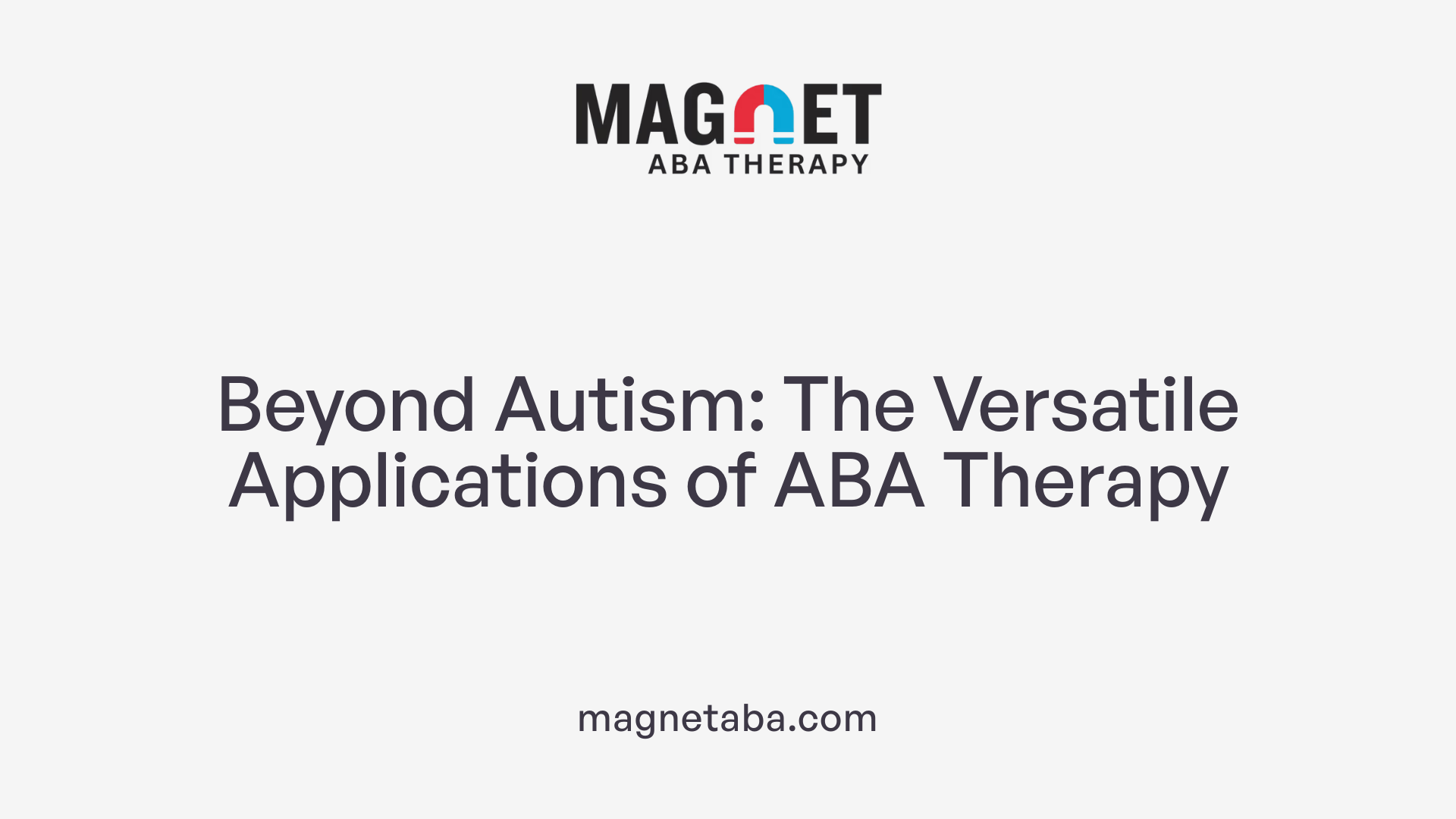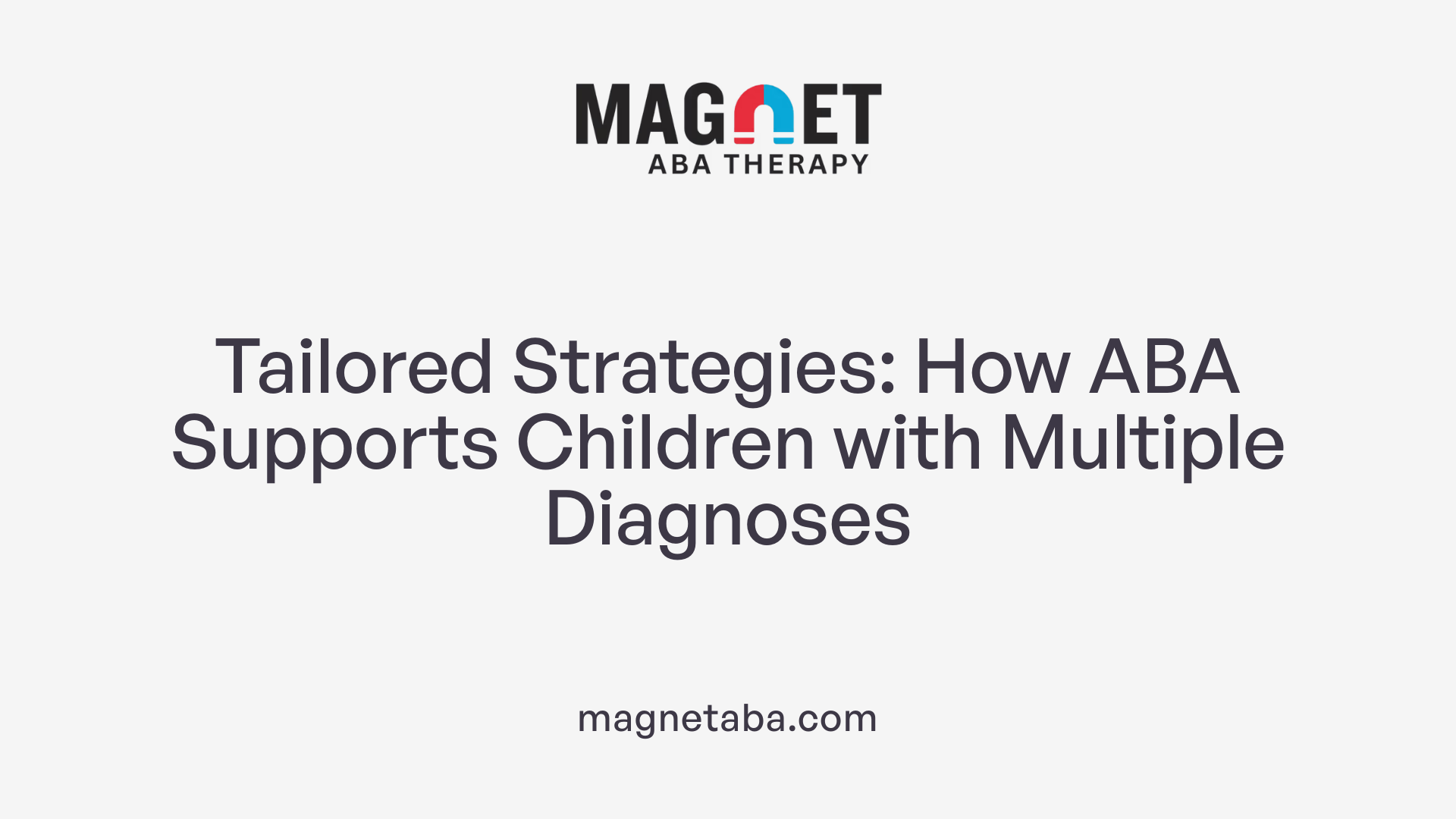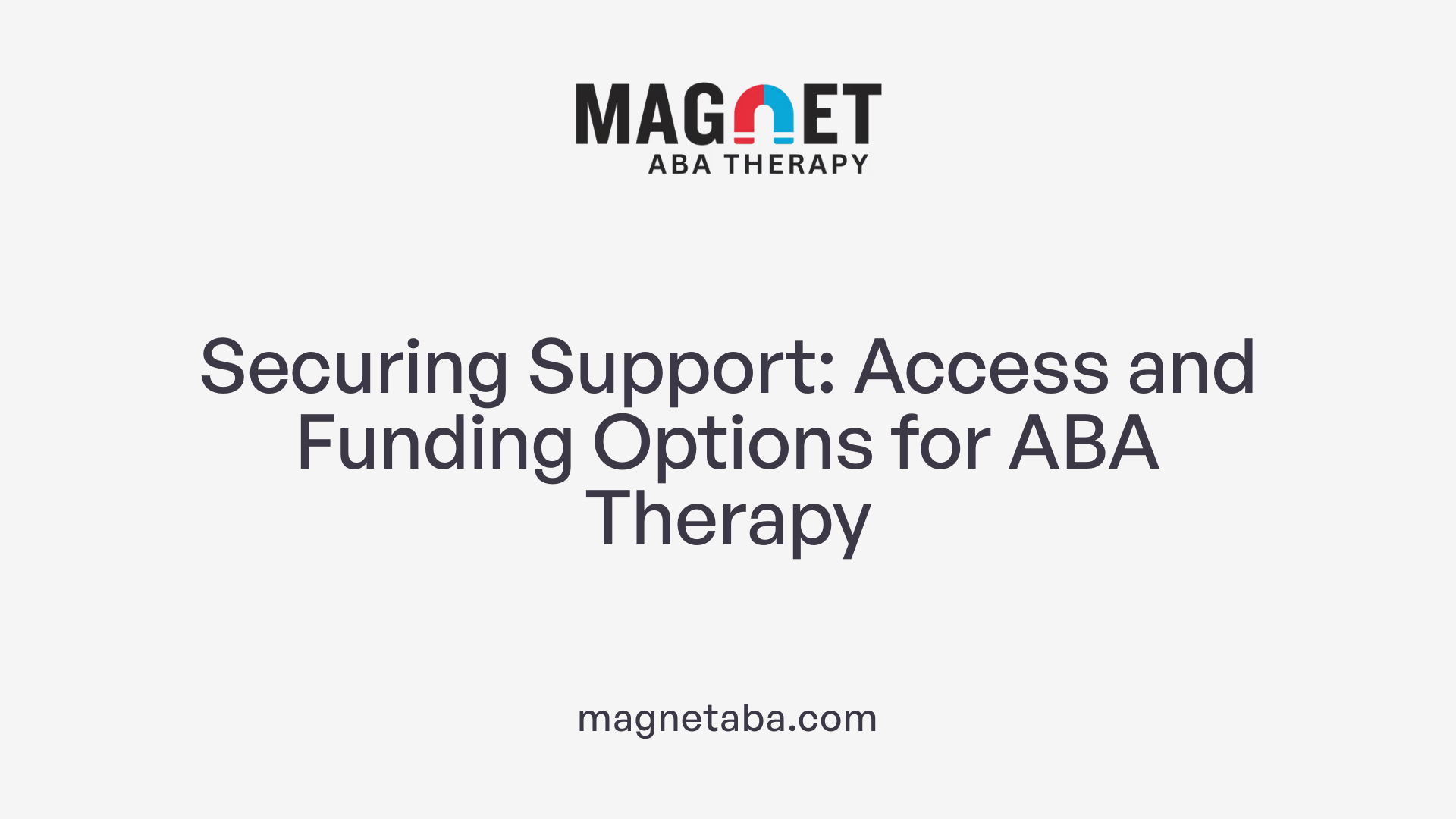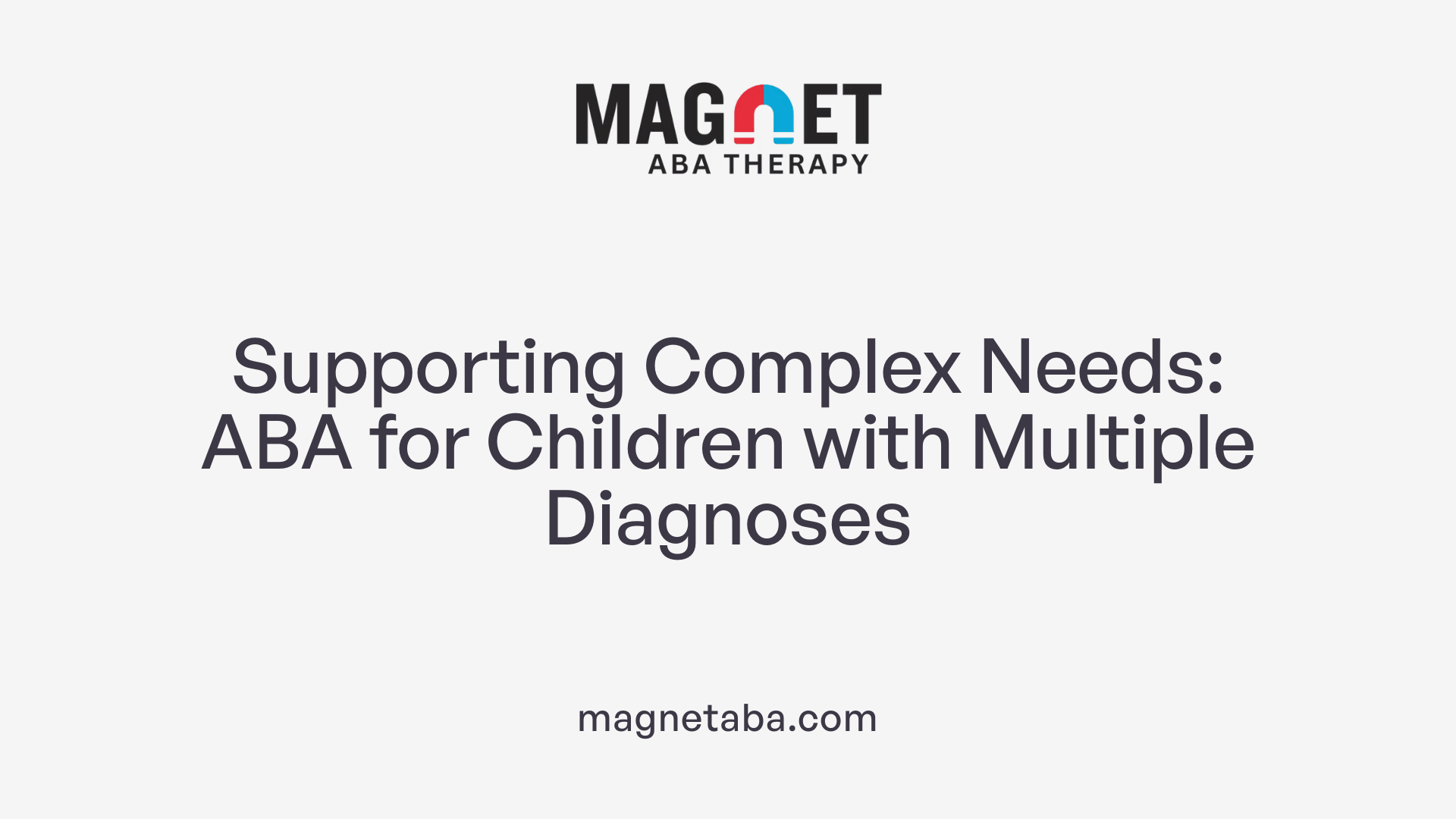Understanding ABA Therapy and Its Expanding Horizons
Applied Behavior Analysis (ABA) is a scientifically supported intervention initially developed for children with autism spectrum disorder (ASD). Over time, its application has broadened significantly, encompassing various conditions and complex diagnostic profiles. For families and professionals navigating dual diagnoses—where children face multiple simultaneous challenges—ABA offers a flexible, individualized approach to foster meaningful improvements across behavioral, emotional, and developmental domains.
The Broad Scope of ABA Therapy for Dual Diagnoses

What are the applications and scope of ABA therapy for children with dual diagnoses?
Applied Behavior Analysis (ABA) is widely recognized for its effectiveness in managing and treating various developmental and behavioral conditions. While it is most notably associated with autism spectrum disorder (ASD), its applications extend far beyond this diagnosis.
For children with dual diagnoses—such as autism combined with conditions like ADHD, OCD, Oppositional Defiant Disorder (ODD), Post-Traumatic Stress Disorder (PTSD), Panic Disorder, or Traumatic Brain Injury (TBI)—ABA offers a flexible, evidence-based approach tailored to their complex needs.
ABA strategies focus on reinforcing positive behaviors while reducing problematic or harmful behaviors. In children with dual diagnoses, this might mean developing social and communication skills, managing attention deficits, or reducing compulsive behaviors. The tailored interventions enable children to improve their independence, emotional regulation, and overall functioning.
One of the strengths of ABA is its individualized design. Each child’s program is based on thorough assessments, with goals aligned to their specific challenges and strengths. For example, ABA techniques might include reinforcement systems like token economies to help children with ADHD sustain attention or learn new skills.
ABA can also play a vital role in helping children manage symptoms related to OCD by promoting healthier responses and reducing compulsions. For children with PTSD or TBI, ABA techniques such as behavior modification or social skills training can help lessen negative reactions and foster calming, coping behaviors.
Moreover, ABA is often integrated with other therapies such as speech therapy, occupational therapy, or physical therapy. This multidisciplinary approach ensures that children receive comprehensive care addressing all facets of their development.
In summary, ABA’s versatile and adaptable nature makes it an essential component in treating children with multiple diagnoses. It supports targeted behavioral change, skill development, and improved quality of life, making it a cornerstone of modern therapeutic strategies for children facing complex challenges.
Addressing Complex and Multiple Diagnoses through ABA

How can ABA therapy support children with complex or multiple diagnoses?
ABA therapy is designed to be highly flexible and tailored, making it especially effective for children with complex or multiple diagnoses. Since each child's needs are unique, ABA interventions are carefully individualized to align with their specific strengths, challenges, and developmental goals.
Using evidence-based strategies such as positive reinforcement, behavior chaining, natural environment training, and behavior assessments, ABA aims to improve a broad spectrum of skills. These include communication, social interaction, daily living skills, academic readiness, and emotional regulation. For children with multiple diagnoses—such as autism combined with ADHD or developmental delays—ABA programs can simultaneously target various areas of difficulty.
Qualified professionals like Board-Certified Behavior Analysts (BCBAs) and behavior therapists design and supervise these personalized plans. They continuously monitor progress and make adjustments to ensure interventions remain relevant and effective. For example, a child with ASD and ADHD might work on improving impulse control while also developing language skills.
Early intervention plays a crucial role, as it allows children to acquire foundational skills during critical developmental periods. Consistency in applying ABA techniques across settings—home, school, and community—ensures that skills generalize and are functional in real-world situations.
Furthermore, ABA's adaptable nature enables integration with other therapies, such as speech, occupational, or physical therapy. This collaborative approach provides a comprehensive support system, addressing multiple diagnoses simultaneously.
Overall, ABA helps foster independence, social engagement, and adaptive behaviors, significantly improving quality of life for children with complex or multiple diagnoses. Its evidence-based, individualized strategies make it an essential tool in managing diverse developmental challenges.
Benefits, Methods, and Principles of ABA Beyond Autism

What are the benefits, methods, and principles of ABA therapy beyond autism spectrum disorder?
Applied Behavior Analysis (ABA) is well-known for supporting children with autism spectrum disorder (ASD), but its applications extend far beyond this condition. It offers a wide array of benefits for individuals dealing with different behavioral and developmental challenges, including ADHD, OCD, ODD, PTSD, TBI, and even mental health issues like anxiety and depression.
The primary advantage of ABA in these contexts is its capacity to improve specific behaviors, teach new skills, and reduce problematic actions. For children with ADHD, ABA can establish reward systems such as token economies to promote attention, self-control, and task completion. Similarly, for children with OCD, ABA techniques help manage compulsions by encouraging healthier responses and breaking the cycle of compulsive behaviors.
In conditions like ODD (Oppositional Defiant Disorder), ABA is used to condition better social behaviors and reduce defiance. For those experiencing PTSD or TBI, ABA strategies support emotional regulation, social skill re-learning, and behavior modification to enhance overall quality of life.
The core principles that underpin ABA—such as positive reinforcement, consistent data collection, and individualized planning—are versatile and adaptable. Therapists use these principles to tailor interventions to meet the unique needs of each person, regardless of their specific condition.
Methods like Discrete Trial Training (DTT) and Pivotal Response Training (PRT) are common strategies within ABA. DTT involves breaking skills into small, manageable steps and teaching them systematically through repeated trials. PRT emphasizes pivotal areas such as motivation and response to social stimuli and promotes spontaneous use of skills in natural contexts.
Another fundamental element of ABA is data-driven decision making. Progress is meticulously tracked through observable metrics, allowing practitioners to adjust interventions for maximum effectiveness. This approach ensures that treatment remains flexible and responsive to each individual’s evolving needs.
Beyond individual therapy, ABA principles are increasingly applied in broader fields. For example, in healthcare, ABA techniques are used to promote health behaviors like medication adherence or healthy eating. In organizational settings, ABA influences workplace safety programs by shaping safety behaviors among employees. In aging populations, ABA-based methods help maintain independence by encouraging activities of daily living.
Overall, ABA’s scientific foundation combined with its flexibility makes it a powerful tool for enhancing behavioral outcomes across diverse populations and challenges. Whether improving social skills in children or fostering healthier habits in adults, the principles of ABA continue to support meaningful improvements in quality of life long after the autism diagnosis.
| Application Area | Techniques Used | Benefits |
|---|---|---|
| Autism Spectrum Disorder | DTT, PRT, FBA, social stories | Communication, social skills, independence |
| ADHD | Token economies, reinforcement strategies | Attention, impulse control, task focus |
| OCD | Response management, behavioral exposure | Reduce compulsions, manage anxiety |
| PTSD | Emotional regulation, calming techniques | Reduce reactions, increase resilience |
| TBI and developmental disabilities | Behavior modification, social skills training | Social integration, daily skills |
| Healthcare | Reinforcement for health behaviors | Medication adherence, healthy routines |
| Workplace Safety | Behavior shaping, training drills | Improve safety, reduce accidents |
| Aging populations | Functionality training, habit reinforcement | Maintain independence, quality of life |
In conclusion, ABA’s principles and practices are widely applicable beyond autism, offering tailored solutions for diverse behavioral, developmental, and health-related challenges. Its evidence-based, adaptable methods make it a valuable approach across many domains, continually improving lives through scientifically supported strategies.
Navigating Access and Funding for ABA Therapy

How can families access ABA therapy for children with dual diagnoses, including eligibility and funding options?
Accessing ABA therapy for children who have dual diagnoses, such as autism spectrum disorder (ASD) combined with developmental disabilities or mental health conditions, involves understanding various insurance options and available funding sources. Many families rely on Medicaid, private insurance, and state-funded programs to cover the costs of this intensive, scientifically supported therapy.
In states like Indiana, Medicaid is mandated under the Early and Periodic Screening, Diagnostic, and Treatment (EPSDT) program to cover medically necessary ABA services for children under 21. This means that children with dual diagnoses eligible for Medicaid can often access ABA therapy through their Medicaid plan, especially if their healthcare providers certify that such services are essential.
Families should first verify that their insurance plan, whether Medicaid, employer-based private insurance, or other private coverage, includes ABA therapy components. It's important to confirm that providers are credentialed and participate in Medicaid if applicable. Many providers are certified Behavior Analysts (BCBAs) or Registered Behavior Technicians (RBTs) who meet the requirements of Medicaid and private insurers.
Beyond insurance, several additional funding options can help families cover costs. Grants from organizations like Autism Speaks or scholarships through the Autism Spectrum Disorder Foundation can provide financial support. Programs like Autism Care Today and the United Healthcare Children’s Foundation also offer grants or subsidies to families seeking ABA services.
State and community programs further assist families. For instance, Medicaid waiver programs such as the Family Supports Waiver or Indiana’s Children’s Special Health Care Services (CSHCS) can provide additional financial aid or direct services. These programs are designed to support children with complex needs who may not fully be covered by insurance.
To navigate these options effectively, families should consult with healthcare providers and autism organizations. Resource centers and local autism societies can offer guidance on eligibility criteria and how to apply for various funding sources. They can also help coordinate services, ensuring that children receive the appropriate interventions in a timely manner.
In summary, securing ABA therapy for children with dual diagnoses involves a combination of verifying insurance coverage, exploring state and grant programs, and seeking support from community resources. A proactive approach, coupled with professional guidance, is essential in ensuring access to this effective therapy.
| Funding Source | Eligibility Requirements | Notes |
|---|---|---|
| Medicaid (EPSDT) | Children under 21, certified as medically necessary | State-specific, varies by state |
| Private Insurance | Varies with plan, must include behavioral health coverage | Credentialed providers required |
| Autism Grants & Scholarships | Vary by program, usually based on financial need | Examples: Autism Speaks, Autism Spectrum Foundation |
| State Programs (e.g., CSHCS) | Children with qualifying conditions, income limits | Additional supports and services available |
| Medicaid Waivers | Eligible for developmental or behavioral needs | Can fund extensive services beyond insurance |
Families are encouraged to start inquiries early, gather documentation of diagnosis and medical necessity, and work closely with healthcare providers and local advocacy organizations to develop a comprehensive funding plan for ABA therapy.
ABA’s Role in Supporting Children with Co-Occurring Conditions

What role does ABA therapy play in supporting children with co-occurring conditions such as autism and other developmental or mental health disorders?
ABA therapy is a crucial tool in helping children who face multiple challenges, such as autism combined with other developmental or mental health conditions. It offers tailored strategies that focus on a wide array of skills, including communication, social interaction, self-regulation, and daily living activities.
For children with autism and co-existing issues like anxiety, OCD, depression, or traumatic brain injury, ABA provides a structured approach to reduce problematic behaviors while encouraging positive ones. For instance, ABA techniques can be used to teach relaxation skills for anxiety or manage compulsions associated with OCD.
Early and intensive application of ABA often results in substantial improvements. Children learn to better control their emotions and behaviors, which supports their overall development and well-being. Moreover, ABA programs are highly adaptable and can be integrated with other therapies to address specific needs more comprehensively.
How does ABA support emotional and behavioral challenges beyond core autism symptoms?
In addition to core autism interventions, ABA effectively tackles broader emotional and behavioral issues. It helps children develop emotional regulation skills, making it easier for them to manage frustration, fear, or sadness.
ABA strategies such as positive reinforcement and behavior chaining are used to promote adaptive behaviors and diminish aggressive or defiant behaviors seen in conditions like Oppositional Defiant Disorder (ODD) or PTSD. These methods help children learn healthier responses to stress and social situations.
Furthermore, ABA's focus on environmental factors influencing behavior allows for the adjustment of settings—home, school, or community—to support better emotional health. For example, using visual schedules or social stories can prepare children for social interactions or transitions that might otherwise trigger anxiety or agitation.
Integration with other therapeutic approaches
ABA does not work in isolation. It is often combined with other evidence-based therapies to enhance outcomes. For children with complex needs, combining ABA with cognitive-behavior therapy (CBT) can provide better management of co-occurring anxiety or depression.
Sensory integration techniques, speech and language therapy, occupational therapy, and physical therapy can complement ABA interventions by targeting specific developmental areas. This multidisciplinary approach ensures a comprehensive support system tailored to the child's unique profile.
How does this combined approach improve overall functioning?
Integrating ABA with other therapies allows children to develop a wide range of skills simultaneously. For example, while ABA works on reducing problematic behaviors and increasing communication, speech therapy can enhance language skills, and occupational therapy can improve fine motor skills.
This comprehensive support promotes generalization of learned skills across various environments, leading to better social integration, increased independence, and improved quality of life.
| Aspect | Focus Area | Supporting Strategies | Benefits |
|---|---|---|---|
| Emotional Regulation | Anxiety, depression | Relaxation training, social stories | Reduced emotional distress |
| Behavioral Challenges | Aggression, defiance | Positive reinforcement, functional behavior assessments | Improved cooperation and social skills |
| Developmental Skills | Language, motor skills | Speech therapy, occupational therapy | Enhanced overall functioning |
| Social Skills | Peer interaction | Social stories, group learning | Better social integration |
In sum, ABA therapy's flexibility and scientific foundation make it a vital component in managing co-occurring conditions, helping children lead healthier, more balanced lives while accessing a broad spectrum of developmental supports.
Integrating ABA with Other Interventions for Holistic Support
What is the importance of early intervention with ABA and how does parental involvement enhance its effectiveness?
Early intervention using ABA therapy, especially before the age of five, plays a vital role in shaping a child's developmental trajectory. At this stage, children are most receptive to learning new skills, and early ABA implementation can set a strong foundation for social, communication, and daily living skills. Initiating therapy early helps identify each child's unique strengths and challenges, allowing for tailored programs that are more likely to produce lasting improvements.
Research consistently shows that children who receive timely, intensive ABA services tend to experience better long-term outcomes. These benefits include increased independence, improved social interactions, and enhanced communication abilities, all of which contribute to a higher quality of life.
Parental involvement is a cornerstone of effective ABA therapy. When parents are actively engaged, they can reinforce the strategies used during therapy sessions and extend learning into everyday situations at home. This consistency is crucial for the generalization of skills across different environments, ensuring that the child applies what they have learned in real-world settings.
Training parents in ABA techniques equips them with the tools to support their child's progress. When parents understand how to implement reinforcement strategies, manage behaviors, and encourage skill development, they become true partners in the therapeutic process. This collaboration fosters a supportive environment that helps normalize behavior patterns and builds confidence.
Furthermore, involving parents helps therapists gain valuable insights into the child's daily routines and interactions outside the therapy setting. This information allows for adjustments to be made to the intervention plan, making it more effective and personalized.
Combining early intervention with active parental participation offers a comprehensive support system that significantly enhances developmental outcomes. It creates a seamless integration of therapy goals into the child's everyday life, reinforcing learning and promoting consistency.
In summary, early ABA intervention is critically important for laying a solid developmental foundation, and parental involvement amplifies its success by ensuring that skills are practiced and reinforced in multiple settings. This synergy creates the best possible environment for children to thrive and reach their full potential.
The Promise of ABA for Children Facing Multiple Challenges
While ABA therapy is often associated with autism spectrum disorder, its adaptable, evidence-based framework makes it a powerful tool for supporting children with dual diagnoses. The ability to tailor interventions to complex, multifaceted needs allows children to develop essential skills, reduce problematic behaviors, and increase independence. Accessing this therapy involves navigating insurance, funding, and regional services, but the potential benefits—improved social, emotional, and functional outcomes—make it a worthwhile pursuit. As research continues to expand and awareness grows, ABA remains a cornerstone of comprehensive, holistic care for children facing multiple developmental, behavioral, and mental health challenges, offering hope and tangible pathways to a better quality of life.
References
- Is ABA Therapy Only for Autism? - Applied Behavior Analysis Degrees
- Treatment and Intervention for Autism Spectrum Disorder - CDC
- Treating Kids With Down Syndrome on the Autism Spectrum
- 6 Life-Changing Benefits of ABA Therapy for Children with Autism
- Autism and ABA Therapy: Everything You Need to Know
- Reasons Parents May Seek ABA for Their Child - TherapyWorks
- Understanding Dual Diagnosis in Autism - A Better Way ABA
- Who Qualifies for ABA Therapy: Eligibility Guide
- Can You Get ABA Therapy Without an Autism Diagnosis?












